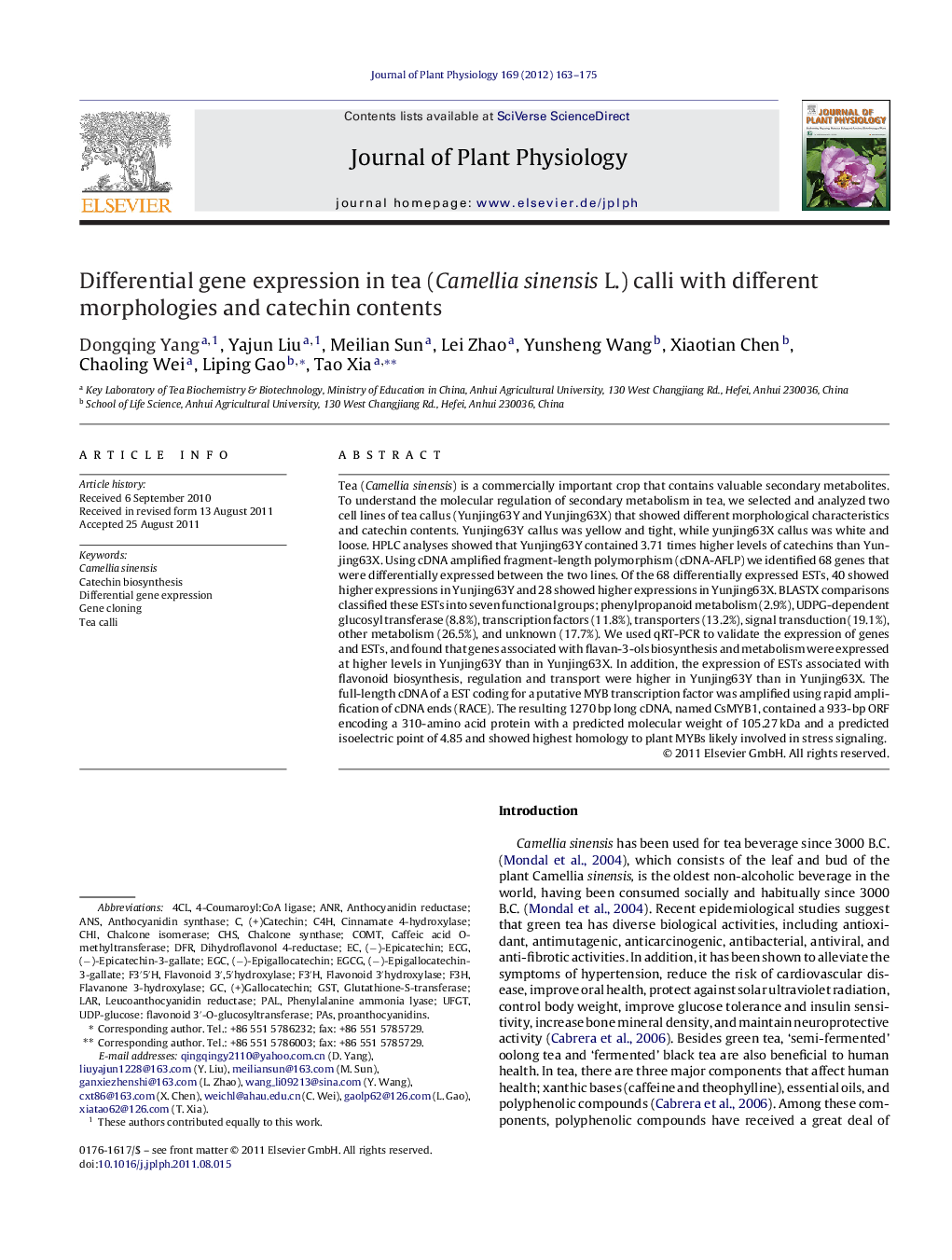| کد مقاله | کد نشریه | سال انتشار | مقاله انگلیسی | نسخه تمام متن |
|---|---|---|---|---|
| 2056269 | 1075813 | 2012 | 13 صفحه PDF | دانلود رایگان |

Tea (Camellia sinensis) is a commercially important crop that contains valuable secondary metabolites. To understand the molecular regulation of secondary metabolism in tea, we selected and analyzed two cell lines of tea callus (Yunjing63Y and Yunjing63X) that showed different morphological characteristics and catechin contents. Yunjing63Y callus was yellow and tight, while yunjing63X callus was white and loose. HPLC analyses showed that Yunjing63Y contained 3.71 times higher levels of catechins than Yunjing63X. Using cDNA amplified fragment-length polymorphism (cDNA-AFLP) we identified 68 genes that were differentially expressed between the two lines. Of the 68 differentially expressed ESTs, 40 showed higher expressions in Yunjing63Y and 28 showed higher expressions in Yunjing63X. BLASTX comparisons classified these ESTs into seven functional groups; phenylpropanoid metabolism (2.9%), UDPG-dependent glucosyl transferase (8.8%), transcription factors (11.8%), transporters (13.2%), signal transduction (19.1%), other metabolism (26.5%), and unknown (17.7%). We used qRT-PCR to validate the expression of genes and ESTs, and found that genes associated with flavan-3-ols biosynthesis and metabolism were expressed at higher levels in Yunjing63Y than in Yunjing63X. In addition, the expression of ESTs associated with flavonoid biosynthesis, regulation and transport were higher in Yunjing63Y than in Yunjing63X. The full-length cDNA of a EST coding for a putative MYB transcription factor was amplified using rapid amplification of cDNA ends (RACE). The resulting 1270 bp long cDNA, named CsMYB1, contained a 933-bp ORF encoding a 310-amino acid protein with a predicted molecular weight of 105.27 kDa and a predicted isoelectric point of 4.85 and showed highest homology to plant MYBs likely involved in stress signaling.
Journal: Journal of Plant Physiology - Volume 169, Issue 2, 15 January 2012, Pages 163–175